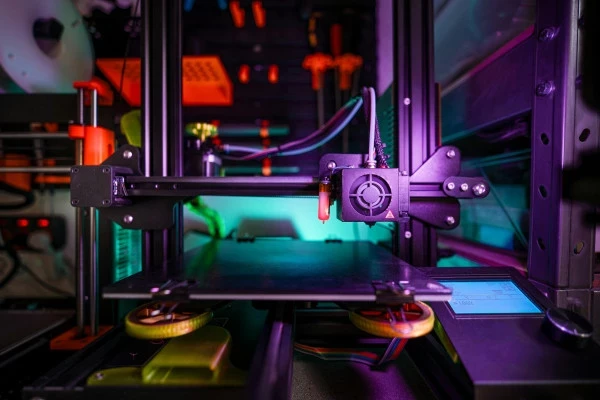C4ISR & JADC2: Navigating the Next Frontier in Military Command and Control
Add bookmark
In 2024, military success is partly defined by the technologies being used to strengthen situational awareness and communication.
In order to maximize the potential of AI, analytics, and other critical operational solutions for mission success, the US DoD has historically relied on command and control, or C2, to organize personnel and information. The DoD defines C2 as “the exercise of authority and direction by a properly designated commander over assigned forces in the accomplishment of the mission,” which at its fundamental level means how the military makes operational decisions.
As AI and machine learning (ML) have advanced, the DoD has been forced to rethink how it uses C2. In this article we will analyze C4ISR, the next step in the evolution of military command and control, and CJADC2, the strategy developed by the DoD to ensure military operations continue to advance.
If you want to hear from the experts on C4ISR and JADC2, register for IDGA’s C4ISR Summit from November 19-20 in Bethesda, Maryland. This two-day event will feature discussions on the integration of cutting-edge technologies such as artificial intelligence (AI), machine learning (ML), and big data analytics, and discuss with senior military and government leaders how CJADC2 funding and program efforts are revolutionizing decision-making processes and enhancing operational effectiveness.
What is C4ISR?
Command, Control, Communications, Computers, Intelligence, Surveillance and Reconnaissance, or C4ISR, represents the nervous system of military operations.
According to the Acquisition Office of the Assistant Secretary of Defense, C4ISR is the infusion of intelligence products to provide battlespace awareness. C4ISR enhances battlefield lethality through:
- Enterprise Intelligence, Surveillance, and Reconnaissance (ISR)
- Communications and Networks
- National Intelligence
- Command and Control and Cyber C2
C4ISR networks are intended to collect massive amounts of data through multiple sensors, databases, and other sources worldwide. The data is then processed and shared with authorized users to make more informed strategic decisions.
Factors such as navigating an evolving operating environment, the need for interoperability, and leveraging the cloud, are all top priorities for the DoD when looking to improve C4ISR networks.
AI is poised to have a prominent role in any upgrades the DoD makes to its C2 systems. The application of AI solutions will help deliver critical support systems in a timely manner and can assist human operators navigate multiple decision points. In order to improve the use of AI across C2, the department created the Joint Artificial Intelligence Center (JAIC) in 2018. The center oversaw the rollout of a new department-wide AI strategy. The strategy contains for key focus areas:
- Delivering AI-enabled capabilities that address key missions
- Partnering with leading private sector technology companies, academia, and global allies and partners
- Developing a leading AI workforce
- Leading in military ethics and AI safety
Despite the department’s investment in AI to improve C4ISR capabilities barriers still exist to sustained improvement. One of which is the DoD’s arduous acquisition process which has historically caused the department to utilize outdated technologies and play catch up. Additionally, the department operates at the behest of the funding provided by congress. The National Defense Authorization Act annually determines funding for specific projects, leaving the DoD little flexibility to address new needs.

What is JADC2?
JADC2 is a DoD acronym that stands for Joint All Domain Command and Control. The goal of JADC2 is to enable the Joint Force to act at all levels and phases of war across all domains—land, sea, air, space, and cyber—alongside partners. This approach aims to deliver an information advantage at the speed of relevance, allowing the U.S. military to outpace adversaries in decision-making.
JADC2 is intended to enhance and expand C4ISR capabilities. One strategy to do so is integrating sensors and data across joint forces to establish a comprehensive picture of the battlespace. Another is to improve the responsiveness of military actions by ensuring information flows seamlessly across platforms to facilitate timely responses.
In 2024, JADC2 evolved to a combined JADC2 or CJADC2. The added “C” is intended to show the program's focus on bringing international collaboration to aspects of command and control.
This February, Assistant Defense Secretary Kathleen Hicks revealed the DoD’s initial iteration of the CJADC2 software. The initial version represents a minimal viable capability combining software platforms, data integration and cross-operational concepts intended to provide a warfighting advantage.
The first iteration of CJADC2 was developed in just six months thanks to significant contributions from the Chief Intelligence and Data Office (CDAO). According to Assistant Secretary Hicks, the version has proven to be low latency and reliable. Efforts by the DoD to digitally link its Army, Navy, and Air Force, come while China pursues its own countermeasure known as Multi-Domain Precision Warfare.
Although the DoD cannot reveal specifics regarding what the capability was developed for, the next steps for CJADC2 will be scaling this capability, requiring sustained internal improvements, talent investments, effective industry partnerships, and securing future congressional appropriations.























